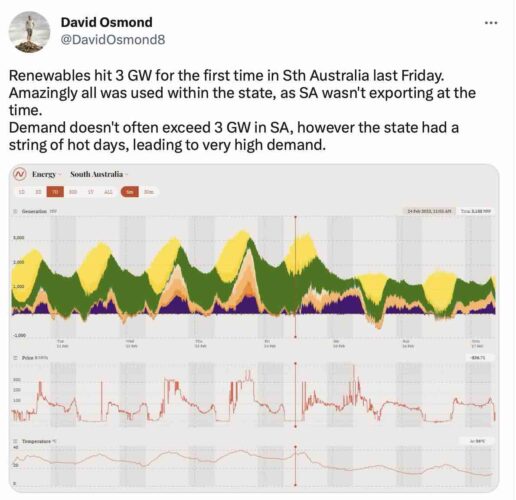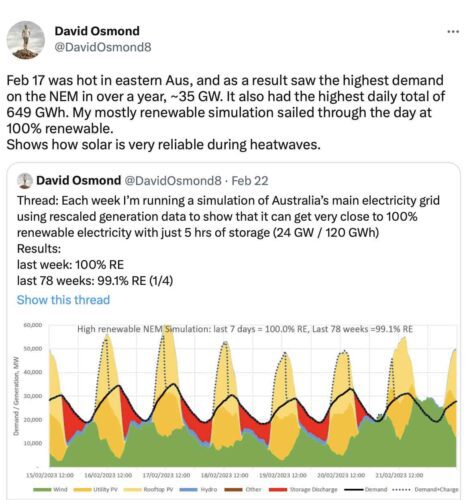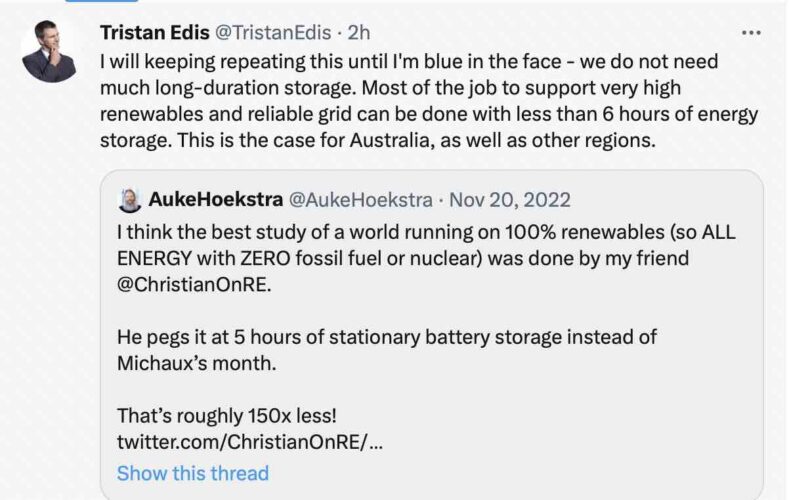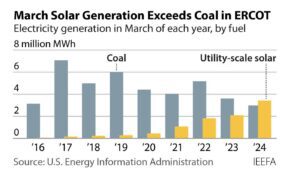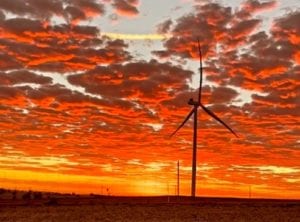Australia’s growing amount of wind and solar capacity has set new output records, helping relieve the pressure on ageing and vulnerable fossil fuel generators as heatwaves continue to sweep across the country.
In NSW on Monday, wind and solar hit a new record output of 7.44GW just after noon (grid time, or 1.05pm AEDT), helping relieve the pressure as extreme heat drove demand levels to a multi-year high and well above forecasts.
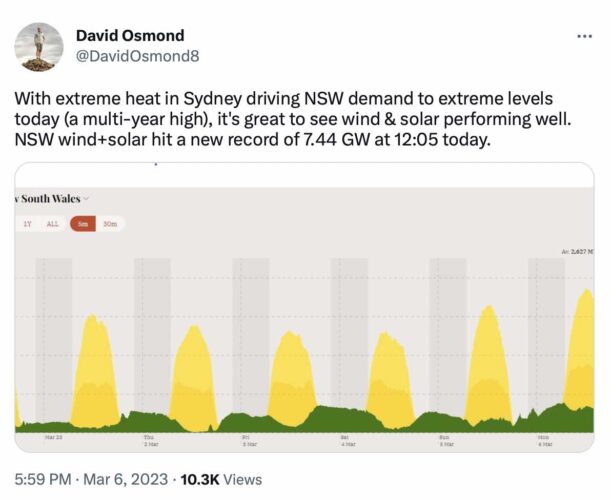
The NSW situation was interesting because the state also set a renewables output record, including hydro, of 7.5GW earlier in the day, according to data from GPE NemLog2.
The Australian Energy Market Operator also announced on Wednesday that NSW had set a March record for “operational demand” of 13.136GW at 6pm on the same day.
 Operational demand excludes the demand soaked up by rooftop solar as this graph above shows. The dotted line is “operational demand” and is considerably lower because NSW also set a record for rooftop PV output of 3.89GW at noon (grid time), according to NemLog.
Operational demand excludes the demand soaked up by rooftop solar as this graph above shows. The dotted line is “operational demand” and is considerably lower because NSW also set a record for rooftop PV output of 3.89GW at noon (grid time), according to NemLog.
That of course ate into the midday lunch of the coal fleet, which was reduced to output of around 3.4GW, or 31 per cent, before ramping up to more than 7GW in the evening when solar packed its bags up for the day.
It was very nearly not quite enough. AEMO declared an “actual lack of Reserve 2” event in the early evening, which meant that if one of the big coal generators had tripped, or ceased working for some reason, then shortages may have ensued. In the end, everything held together.
Osmond notes it is not the first time that wind and solar have responded well in the midst of a heat wave. In South Australia on February 27, in the midst of another heatwave, wind and solar set a new output record of more than 3,000MW – with all of it being consumed within the state.
Of course, Australia can’t solve anywhere near its demand challenges with wind and solar yet, because it has nowhere near enough installed. But over the last two years Osmond has been working on a weekly model of how much storage would be required if there was enough wind and solar.
His conclusions are that five hours storage would be enough in nearly all circumstances, including most recently in another heat wave on February 17, that shows that five hours storage – 24GW and 120GWh – wold be enough to get “very close” to 100 per cent renewables.
This is an important perspective, because there is a lot of focus on the need for gas, and for “long duration” storage of more than eight hours in a high renewables grid.
Some technologies depend on that assessment, but many analysts are now not so sure, including Tristan Edis from Green Energy Markets (see below), who puts the requirement at six hours.


